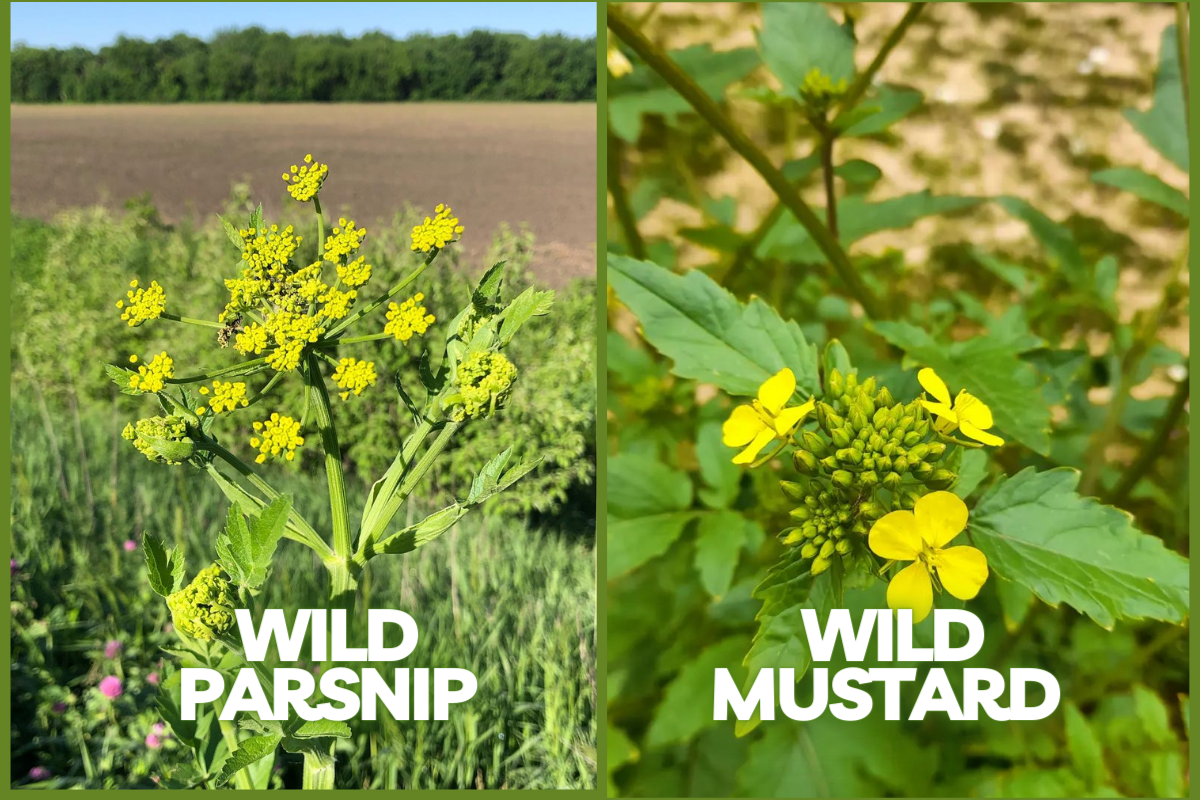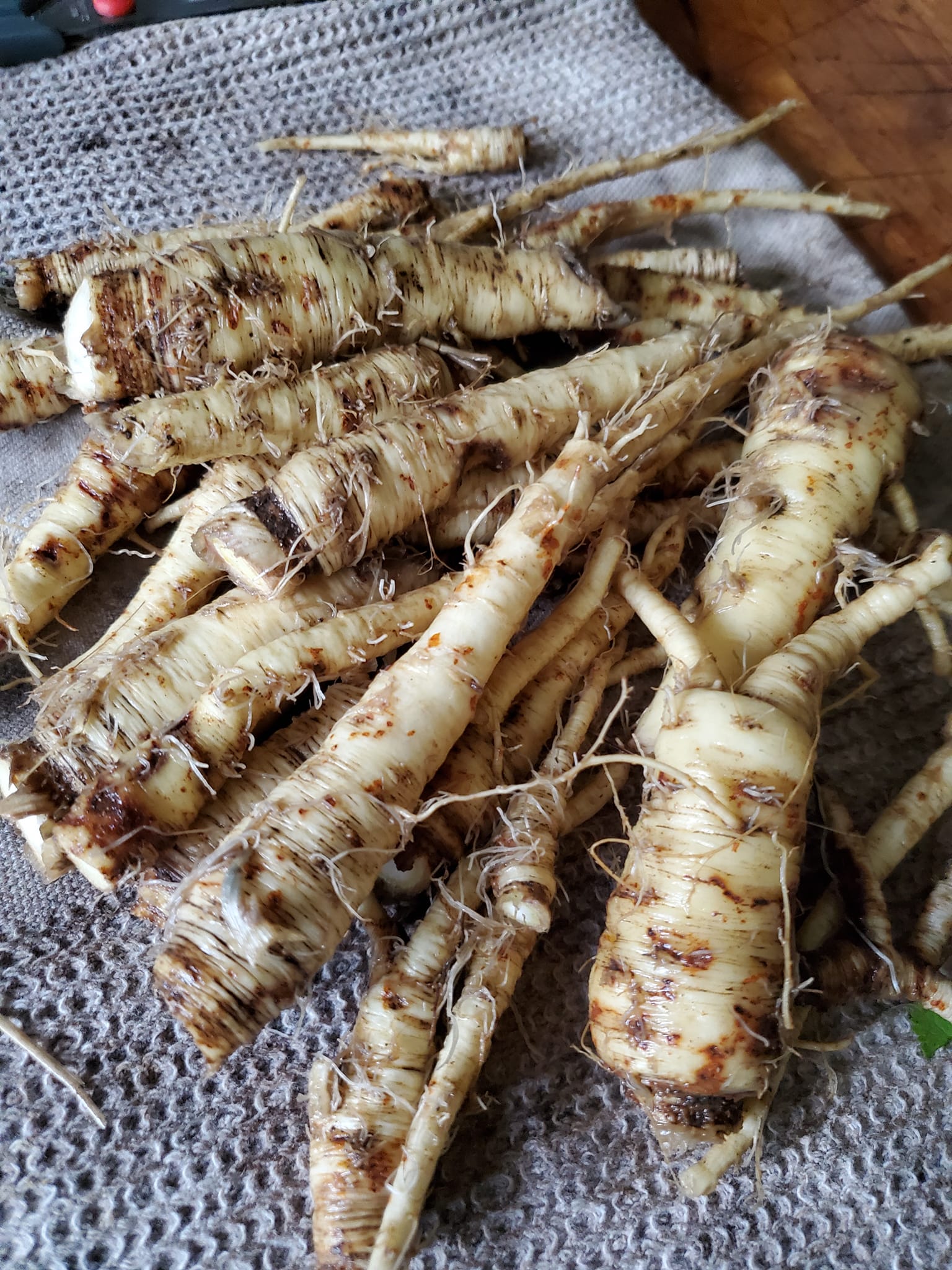In the gardening community, Wild Parsnip vs. Wild Mustard dispute is rising because of their matching yellow flowers, but actually, they are different species.
If you suspect your garden is invaded by one of these weeds, read on to identify and successfully eradicate them.
Table of Contents Show
Wild Parsnip Vs. Wild Mustard: Similarities
Wild Mustard (Sinapsis arvensis) and Wild Parsnip (Pastinaca sativa) are invasive plants in the same habitat.

Along with sharing common areas, Wild Mustard and Wild Parsnip share these visual similarities.
- They both boast yellow blooms as they reach flowering maturity.
- They both look similar in appearance when not fully blooming.
- The leaves of both weeds are lobed or compound when young.
- Both invasive species grow in similar habitats, such as less disturbed areas.
- They are noxious and proliferate by suppressing the growth of native plants.
- Also, they share a common life cycle (annual, biennial, or both).
- They spread through seed dispersal, contributing to their invasive nature.
Difference Between Wild Parsnip & Wild Mustard
Did you know Wild Parsnip and Wild Mustard are invasive species from Europe and were introduced to North America as a crop?
Although a weed variety, both (Wild Parsnip vs. Wild Mustard) share many dissimilarities, which may be helpful when identifying them.
1. Plant Size & Seedling
Unlike Cow Parsnip, Wild Parsnip is loftier and grows 5 feet tall.
Wild Mustard, contrarily, reaches about 2-3 feet tall but can vary depending on growing conditions.
Additionally, Wild Parsnip and Wild Mustard have a relatively high seed production rate, contributing to their rapid invasion.
2. Leaves Appearance
Wild Parsnip has compound leaves with lobes shaped like a human palm and fuzzy (hairy) undersides.
The leaves are typically arranged in a rosette during the first year of growth and become alternately arranged in pairs during the second year.
Wild Mustard boasts deeply lobed or pinnately divided oblong to obovate leaves.
The lower leaves are usually stalked with a hairy and rough surface.
In fact, you can harvest fresh leaves and use them raw in salads or cooked in different dishes.
3. Growth Habit & Spread
Wild Parsnip is a biennial plant, taking 2 years to complete its life cycle.
It forms leaves in the first year, produces a flowering stalk, and sets seeds in the second year.
On the other hand, Wild Mustard is an annual, and sometimes biennial, plant setting seeds each year.

4. Flower Appearance
Wild Parsnip boasts dense clusters of yellow flowers arranged in an umbel, measuring 4-8 inches in diameter.
A single umbel can contain numerous small individual flowers, which may look like a large blossom from a distance.
But Wild Mustard produces small yellow flowers with 4 petals in a raceme.
5. Roots & Uses
Wild Parsnip grows a long, thick taproot, usually pale yellow or cream-coloured.
In form, the Wild Parsnip roots resemble that of Wild Carrots, but the taste is unpalatable.
These roots can be harvested and cooked for eating, but beware of the deadly chemical furanocoumarins.

However, Wild Mustard forms an inedible tap root with fine root hairs branching out.
6. Plant Toxicity
Wild Parsnip produces sap containing harmful chemicals, causing skin reactions (phytophotodermatitis).
The phytochemicals are so strong that Wild Parsnip sap can kill the skin cells and terminate their protective power.
In case of pet poisoning, call the Animal Poison Control (ASPCA) at (888) 426-4435.
On the other hand, Wild Mustard is generally considered non-toxic, causing no significant harm.
From Editorial Team
Final Thought!
Although growing Wild Parsnip and Mustard help provide soil stability and reduce erosion, they can quickly invade your garden.
Therefore, regularly weed out your garden or systemic herbicide spray to reduce the number of wild weeds and their spread.
